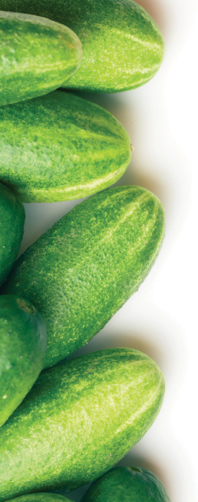
While it may not be a new trend, we see that consumers are still placing high value on being able to purchase locally grown produce from businesses they trust. We’ve seen large fast food chains incorporating more fresh fruits and veggies into menu items to draw in health-conscious consumers who may have shied away from the brand. We’ve seen big pushes on social media and marketing efforts aimed at increasing fruit and vegetable consumption, and the momentum doesn’t seem to be slowing down. Bryan Silbermann, CEO of the Produce Marketing Association, shared his reflections on the produce market with Produce Grower in February. “The future of the industry is really bright,” Silbermann says. “I think there are demographic changes happening within the consuming public in the United States and abroad that speak to increased consumption opportunities for fresh produce.”
Our research in Greenhouse Management and Produce Grower has shown that many growers have expanded their ornamental operation into edible production and others are considering doing so. Tomatoes rank highest in both finished produce and transplants, with peppers (hot and sweet) and cucumbers following close behind. If you’re thinking about growing these crops or others, we’ve got just what you need.
In this article, we share some research from sister publications that will help you to better understand the produce growing industry, including consumer demand and what your peers are already growing. Then, Christopher Currey delves into the ins and outs of growing food crops, including market demand, choosing appropriate crops for your goals and educating yourself on production differences in this article. Leslie Halleck further details crop types and market trends in her article here. Finally, one of the main differences between growing flowers and growing food is the need to follow strict protocol to maintain food safety. Turn to this article for resources you can consult to educate yourself and your team on the latest regulations and guidelines.
Diversified production
As we discussed in our 2015 State of the Industry Report in Greenhouse Management, almost two-thirds of ornamental growers are also growing vegetable transplants and more than half are growing herbs. When we look at finished produce, about a third of the growers have moved into that area.
About 15 percent of Greenhouse Management growers reported that edible crop production made up more than half of their production, while many others appear to be supplementing their ornamental production with produce. Twenty-seven percent reported that they do not grow transplants or finished produce.
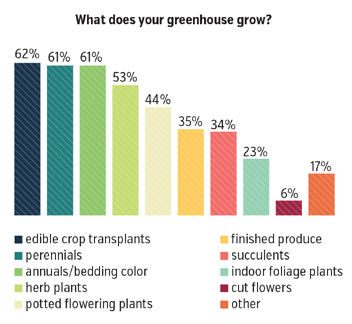
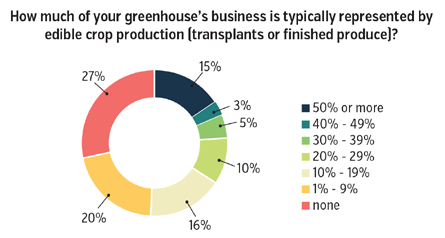
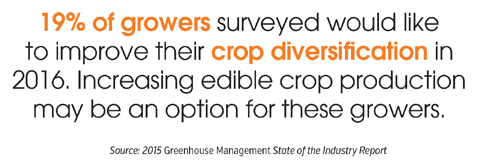
A look at the U.S. market
Sales of food crops grown under protection has more than tripled in the U.S. in the past 16 years, according to the 2014 Census of Horticultural Specialties (CHS) conducted by the U.S. Department of Agriculture. In 1998, these food crops sales were approximately $222.6 million, while in 2014 that number jumped to approximately $796.7 million. With recent climate and water concerns and an increasing need to become more efficient to feed a growing population, these numbers aren’t surprising, but perhaps another reason to consider getting into food production.
From a production standpoint, tomatoes are by far the leading under protection crop, according to the CHS. Out of a total of 93.3 million sq. ft. of protected food crop production in 2014, about 42.6 million of that is dedicated to tomatoes, with herbs following with about 13.8 million sq. ft. Other crops of importance are cucumbers, lettuce, peppers and strawberries.
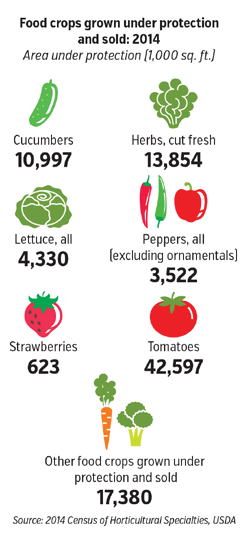
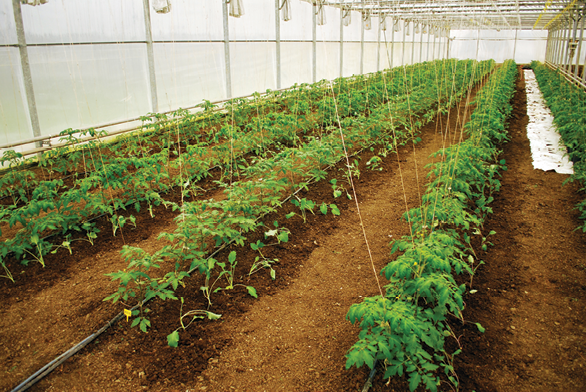
Which edibles are being grown under cover?
According to this year’s State of the Tomato Report, we can see that Produce Grower readers are growing more finished produce than before. Finished tomato production is up 9 percent, while finished cucumbers are up 7 percent and finished sweet and hot peppers are both up by 2 percent.
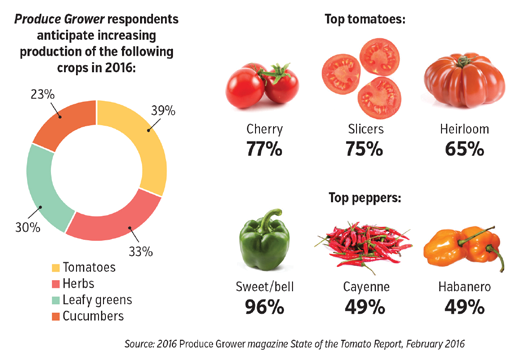


Retail produce recap
Since the 2013 State of the Industry Report in sister publication Garden Center magazine, edibles have remained the hottest trend at independent garden center stores. Garden centers that aren’t yet on board with selling edible transplants or finished produce may be missing out on a great opportunity. And for those stores that aren’t growing these plants on site, there may be additional opportunities for ornamental growers to shift their production to supply this demand. After all, according to the 2015 State of the Industry Report, 65 percent of retailers are purchasing their green goods from local growers, and 63 percent of retailers noted increased edibles sales again this year.

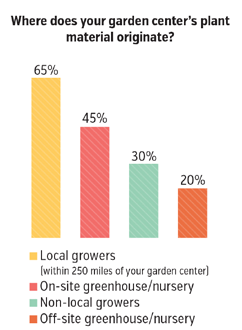
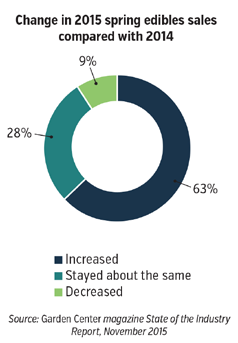

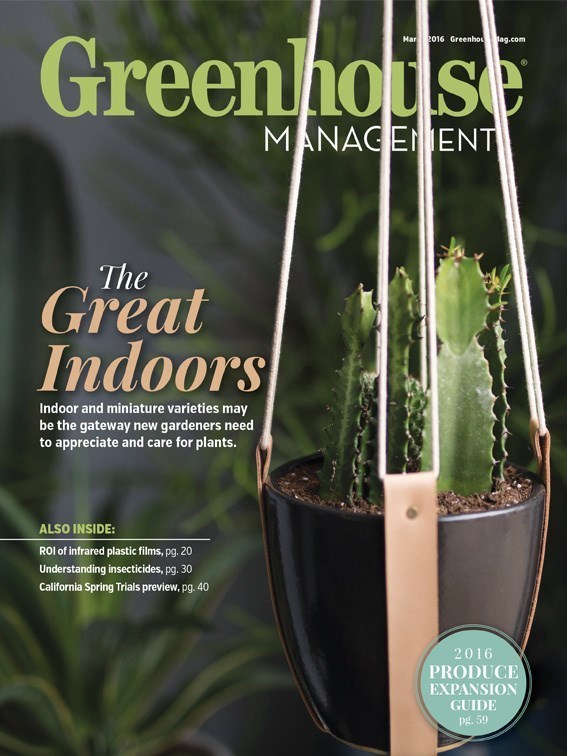
Explore the March 2016 Issue
Check out more from this issue and find you next story to read.
Latest from Greenhouse Management
- Passion grows progress
- Registration opens for Darwin Perennials Day
- U.S. Department of Labor finalizes farmworker protection rule
- Azo Root is now available from Harrell’s
- Bidens ferulifolia Blazing Glory
- Rob Hanifin joins Ridder North America as product specialist for climate screens
- The importance of measuring light
- Spigelia marilandica





